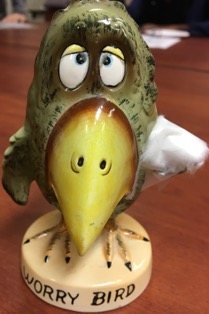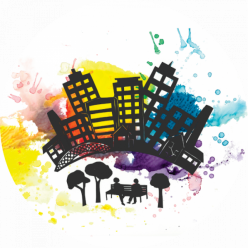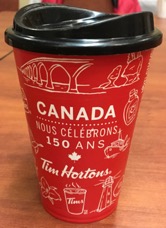Story circle is about telling a personal story with an object and using that object as a starting point to tell a story about how they want their community to change for the better. I know that a lot of people tend to think that we will ask them to tell the stories about their hardships and their traumas, because a lot of personal storytelling is about that, but the stories from Transforming Stories are different. The stories we ask for are intended to be both personal and public. It’s how the personal transitions into the public and ends with the changes you want to see you in the realm of the public.
— Melanie Skene, Transforming Stories
We had a great first meeting of our new performance group last week! The participants were recruited because of their knowledge of the difficulties of holding on to decent rental accommodations in a rapidly changing Hamilton. But we didn’t start by talking about housing problems. As always in the Transforming Stories process, we started with a story circle.
In the week before the workshop, we asked all the participants, including the researchers, to imagine Hamilton ten years from now as a much better city. We asked: “What do you imagine life might be like for people with experiences like yours in that much better Hamilton?” Each person then chose an object to bring to the workshop that would help them tell a brief story about how the person they imagined might experience that new Hamilton.
The collection of objects people brought were as varied as the experiences of the group members:

- a “worry bird” with a broken wing (pictured)
- a paint brush
- a Tim Horton’s Canada 150 coffee mug (pictured)
- a Presto card
- a photograph of the night skyline of a large, modern city (pictured)
- a fridge magnet
- a rose corps bracelet
- a large ceramic tea mug
- a Canadian nickel placed beaver side up
After getting to know each other a little bit over sandwiches and salad, we moved to sit in a circle around a low table on which each of us placed our object. One by one, we picked up our object and told a story about what life would be like in a much better Hamilton. After each person spoke, they passed their object to the person next to them. That person shared their reaction to the story by telling the group what colour they imagined the story to be and what their emotional reaction to it was. The listener then summarized what the story meant to them through a sentence that started with “This is the story of a person who…” After the story object had passed through the hands of all the listeners, the storyteller answered the same questions to share their sense of what their story was about.
It was an amazing feeling to come together around what we dream, and not just around the problems we need to solve. Some people remarked that sharing stories in this way was a deeper emotional process than they had expected. Others felt that the fact of actually handling each other’s objects created a special kind of attention (This is something we also heard from some participants in the pilot project that led to Transforming Stories, Driving Change. Definitely something to think more about…).
By the end of the evening, we had started to weave our individual visions into a collective story:
A story about people who…
have dreams and aspirations
make better change
are dreamers
want to make connections
care about their communities
co-exist with nature, care about each other
walk different walks in life
have the freedom to come and go in safety
In a city where…
things need to be done
change was needed
there is great potential
everyone has a home to call their own
everyone is welcome
we build each other up
people respect each other
people are helpful to each other






